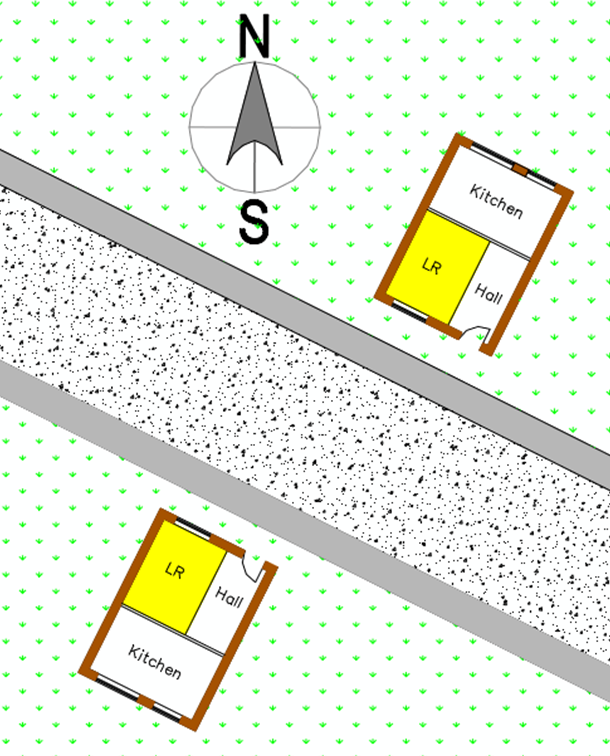The time to Recruit a Professional for Light Access Assessments
In the realm of real estate development, the concept of Light Rights has gained heightened prominence as urban landscapes continue to transform. As real estate developers strive to enhance their projects, comprehending the consequences of light rights can decide a development's success. A survey of light rights acts as a critical tool that analyzes existing light conditions and potential encroachments, ensuring that both stakeholders and surrounding lands are protected. It is important for anyone involved in urban planning and development to comprehend the significance of these assessments and when it might be necessary to enlist the help of a qualified professional.
Working through the challenges of Right to Light can be overwhelming, especially as legal frameworks and local ordinances vary considerably. The background and jurisprudence of Right to Light in the UK provide a basic understanding of why these surveys matter. They not only help in avoiding disputes but also play a significant role in securing permits for development. As look what i found become ever more scrutinized, knowing when to commission a Right to Light survey could potentially save developers from costly delays, legal challenges, and damaged relationships with adjacent properties.
Understanding the Right to Light
Right to light is a juridical principle that gives property owners the ability to access natural light into their buildings. This right arises from established law and can be asserted if a property has received light through specific apertures, such as windows, for a continuous period, often 20 years. The importance of this legal right cannot be underestimated, as it profoundly impacts both property development and neighboring properties.
As city areas experience growing development pressure, comprehending the right to light becomes progressively vital for developers. Gaining planning permission often hinges on whether a proposed development will obstruct light to adjacent properties. Navigating these legal waters requires awareness of your rights, the rights of others, and the potential implications for development projects.
Failing to account for right to light during the planning stages can lead to significant delays, legal disputes, and potentially the halting of development. It is essential for developers to engage in right to light assessments in advance in the planning process to recognize potential issues and mitigate risks, thus ensuring a smoother progression toward completion of their projects.
Planning and Legal Implications
Grasping the planning implications surrounding Right to Light is vital for property developers. Failure to consider these elements can result in significant holdups and extra costs, especially if a developer's plans violate a neighboring light rights. Planning you could try these out demand a comprehensive Right to Light analysis to ensure compliance with local laws and community expectations. This ensures that new projects or extensions do not interfere with the natural light that adjacent properties receive, which is both a ethical and legal obligation in many jurisdictions.
Judicial ramifications can arise if a developer continues without proper assessments. Adjacent property owners may object to proposed projects on the grounds of Right to Light, potentially resulting in lengthy conflicts or court action. A Right to Light survey can serve not only as a form of necessary caution but as a protective measure against possible litigation. Builders should be aware that losing a Right to Light case could lead to costly modifications to their plans or, in the most severe scenario, a stoppage to construction.
Additionally, managing the challenges of the Right to Light in relation to planning approval is essential. While approval may be issued, it does not automatically ensure that light rights will be respected. Understanding these distinctions and making sure that both elements are covered comprehensively can protect developers from unforeseen issues down the line. Employing specialized consultants for Right to Light assessments can simplify this process, guaranteeing that all legal requirements are met and promoting smoother project execution.
This Right to Light Survey Process and Recommended Approaches

The right to light assessment procedure starts with an thorough assessment of a location and its environment. An experienced surveyor can assess the existing light levels as well as the potential impact from proposed developments. This entails examining a alignment for the structure, the position of neighboring buildings, as well as environmental light conditions. Collecting information through site visits and utilizing advanced technologies ensures accurate readings, which are essential for assessing compliance to statutory light regulations.
Following an initial assessment, assessors create comprehensive reports, which include daylight as well as sunlight analysis. These reports outline the way the developments can influence light access to adjacent properties. Best practices recommend adhering to Building Research Establishment (BRE) standards, as they provide a robust foundation for assessing illumination. Developers ought to consult light rights specialists at the beginning of the planning stage in order to detect possible issues as well as address those prior to they becoming legal conflicts.
Clear communication among adjacent property owners remains essential during the assessment. Informing them regarding the planned development and its implications for their light access can help to reducing opposition while also foster cooperation. Responding to concerns in advance can pave the way for smoother approval processes and minimize the chances of costly legal challenges down the line. Hiring https://zenwriting.net/sunbelt2/right-to-light-common-myths-debunked to conduct right to light assessments not just streamlines compliance but also improves the entire success of the project.